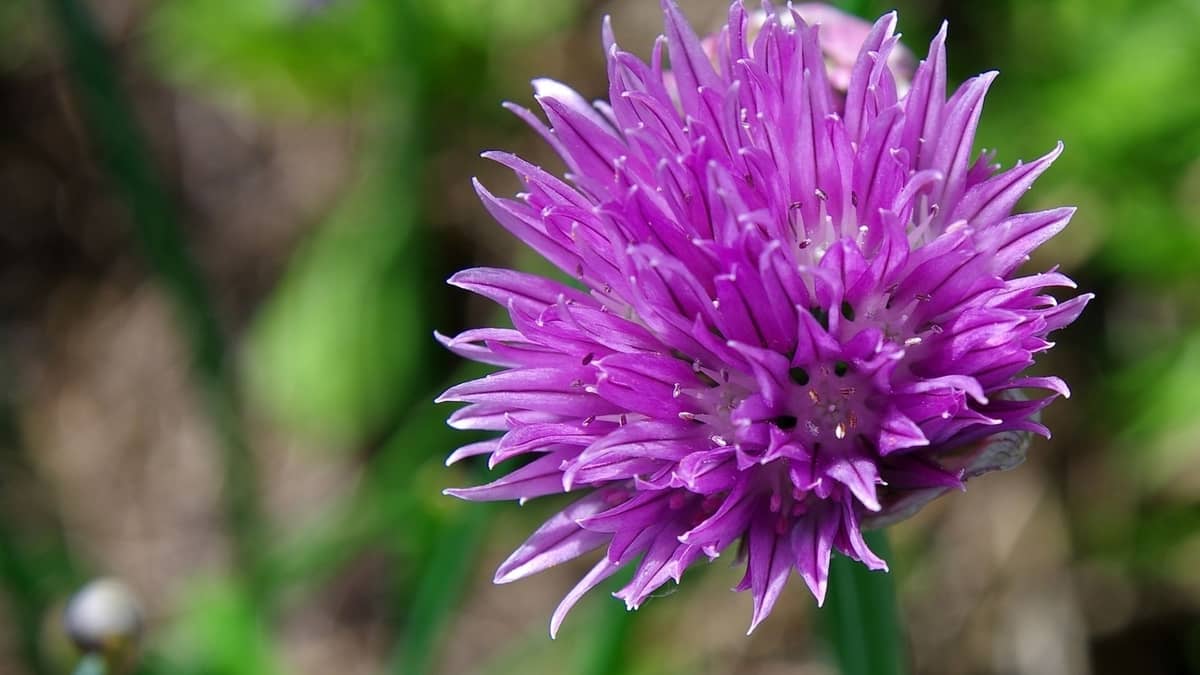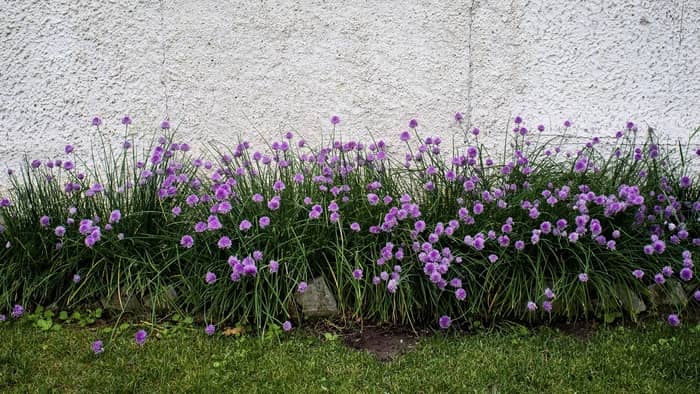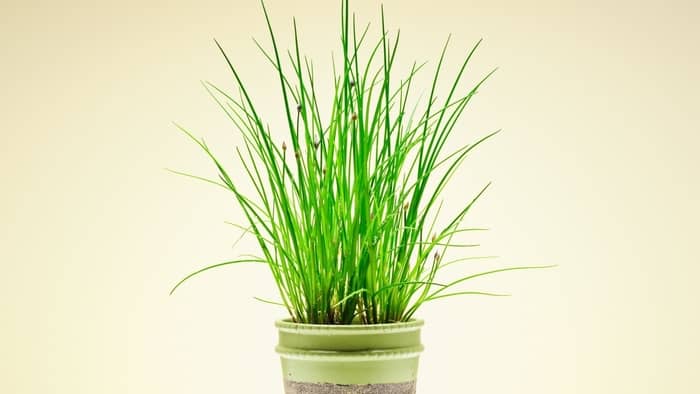Last Updated on November 27, 2021 by Guillermina
Thinking of growing chives indoors in winter? These are the best tricks and tips for growing this fairly hardy plant. Click to find out.
Herbs have a double task. They are there as a decoration that adorns your home, but they are also useful in the kitchen. One of the most popular and at the same time easy to grow is chives. It‘s an excellent choice for both beginners and excellent gardeners with many years of experience.
Chives are one of the dependable plants and have fans all over the world. Are you one of them too?
Since it can’t grow in the garden all year round, this time we will talk about growing chives indoors in winter. Keep reading to find out.
Basic Information About The Plant
Chives or Allium schoenoprasum, is a member of the onion family, Alliaceae. It’s a green vegetable with a mild onion-like taste. They are durable and resistant to perennials that can grow up to about 10-12 inches.
In terms of growth, chives grow from clumps of underground bulbs that then produce round, hollow leaves. In mid-summer, they produce round and pink clover-like flowers.
Health Benefits
Chives are also an excellent source of healthy nutrients. They have a number of health benefits, including anticancer effects, and some of them are:
- reduces the risk of developing some types of cancer,
- antitumor and antimicrobial effects,
- improves mood, memory, muscle control, and other functions of the brain and nervous system,
- an excellent source of vitamin K and folate,
- benefits eyesight,
- reduces inflammation in the body.
How To Grow Chives Indoors
Are you among those who wonder if it’s possible to grow chives indoors in winter? The answer is yes, it is very possible! Late summer to early fall is the ideal time for this venture.
The material you need:
- scissors,
- digging shovel,
- pot / container
- multi-purpose pot mix.
So let’s get to the point.
Container & Soil
The best thing about growing chives indoors in the winter is that you can’t go wrong when choosing a pot. They manage to grow even in the smallest pot. That is why many plant them in such a way and keep them as decoration on the window.
It would be best if you chose a clay pot. This type is known to possess excellent drainage power. However, with good care, each type of pot will do its job.
Be careful not to collect water at the bottom of the pot, as this leads to root rot. It will be enough to drill a few holes in the bottom of the pot to get the excess water out.
When it comes to soil, your chives will greatly appreciate well-draining potting soil. Garden soil is not suitable for this type of planting because there is no proper drainage. The lack of drainage is instantly killing your plant.
For successfully growing chives indoors from seed remember to moisten the soil first. Then plant the seedlings about 1/4 ″ deep and cover the roots for the seedlings. The process of germination of your seedlings will take about 2 weeks. Try to keep the soil moist and warm all the time.
Chives Winter & Light
When growing chives indoors in the winter, one of your main concerns will be a sufficient amount of light. Chives require about 6-8 hours of direct sunlight. You may not always be able to secure it with it. However artificial light will also do its part of the job just as well.
If you use artificial light, place it 6-12 inches from the plant depending on the intensity. Stronger = further, and vice versa. Also, try to find LED lighting to avoid possible burning. Try to regularly rotate the pot in which your winter chives grow. This will avoid leaning to one side. For proper growth, rotation once a week is recommended.
Water & Feeding
Another positive side of growing this plant is its low water needs. Check the soil daily to see if the soil has become dry. If you notice that it needs a dose of water, feel free to do so.
Remember that you want saturated soil, not soaked. Monitor your drainage holes when watering. When they start leaking, it’s a sign that the soil is saturated and that it’s time for the action to stop.
Fertilization
Winter chives prefer low-strength fertilizers. You can use a diluted, water-soluble fertilizer for fertilizing chives 1-2 times a month. Since chives grow much more slowly during the winter, this won’t have to be done more often than that.
Growing With Other Plants
Chives are a technical weed and accordingly, it is not wise to keep them close to other plants. It tends to “jump out” of its pot and spread everywhere. If it spreads to another pot, it will most likely take nutrients from other plants and eventually “kill” them. To prevent other plants from suffocating, allow chives to settle on their own, away from other plants.
Harvesting Your New Chives
As already mentioned, chives will start to grow soon after transplanting/planting from seed. Therefore, wait at least 4 weeks with the harvest, so that it adapts to the new environment.
Once the plant is established, start harvesting by pruning the leaves. Cut the plant leaving approximately 2 ″ above the soil line. This will allow the plant to grow back after each pruning and produce more chive foliage/leaves.
The process of growing chives indoors in the winter ends in the spring when your plant is strong enough to be transplanted into larger pots or into the garden.
Quick Care Tips:
- Provide it with 6-8 hours in bright, indirect light and remove if its leaves turn yellow.
- Water it only when the soil is dry to the touch.
- Chives grow easily but spread even easier. Watch them carefully if near other plants.
Abstract,
Chives are a member of the allium vegetable family, along with garlic and onions. Numerous studies have proven that chives have a number of possible health benefits, including anti-cancer effects. If you are looking for an excellent herb to add to your collection, give it a try.
Now you know all about growing chives indoors in winter. If you have any additional ideas and/or questions, write to us below. We are expecting you!
Take a look at Tips For Growing Raspberries In Containers Indoors




